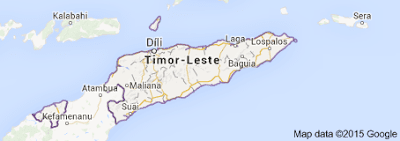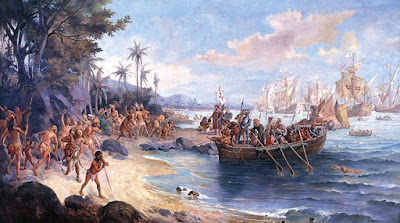 |
The Declaration of the Rights of Man and of the Citizen of 1789 is a
fundamental document of the French
Revolution and in the history of human rights.
|
The Declaration of the Rights of Man and of the Citizen (French: Déclaration des droits de l'homme et du citoyen), was approved by the Constituent National Assembly of France on August 26, 1789. That Declaration was directly influenced by George Washington and Thomas Jefferson who worked out with General Gilbert du Motier, Marquis de Lafayette, who, in turn, introduced it to the French.
In the Declaration of the Rights of Man and of the Citizen mentioned natural rights, it states that sovereignty resides in the nation, and the principle of "three-way division" of powers (legislative, executive and judicial) is established.
 |
Gilbert
du Motier Marquis de Lafayette.
|
Furthermore, projecting the following values:
1. Equality (all men are created equal).
2. The defense of freedom of opinion and the press.
3. The judicial equality and equal tax.
4. The law is equal for everyone.
 |
Portrait
of Honoré-Gabriel Riqueti, marquis de Mirabeau. In August 1789 he played an important role in
drafting The Declaration of the Rights of Man.
|
Louis XVI, king of France, refused to sanction the Declaration, considering a revolutionary text and not accepted other approved August 4, related to new measures imposed to church decrees.
Only a new popular uprising could force the king to take these documents, and this actually occurred, spurred by food shortages and rising prices.
 |
The National Assembly was a transitional body between the
Estates-General and the National Constituent Assembly.
|
On October 5, 1789, a crowd of about seven thousand women from different social classes: workers, shopkeepers, prostitutes and housewives went to the Palace of Versailles, armed with sticks, spears, large bars, and even pistols and muskets, in order to protest before the king to administer the nation from Paris, and they had to. Revolutionary French women shouted: To Versailles, Versailles!
 |
An illustration of the Women's March on Versailles, 5
October 1789.
|
The King of France was forced to move to the Tuileries Palace in Paris, and had to accept the Declaration of Rights of Man and of the Citizen, the same day.
Ten days later joined the National Assembly. The king also had to accept the Declaration of the Rights of Man and of the Citizen and decrees affecting the Catholic Church.
 |
Shortly after the storming of the Bastille, on 4 August feudalism was
abolished and on 26 August, the Declaration of the Rights of Man and of the
Citizen.
|
Postscript: It added that two years later, in 1791, the French pamphlet Olympe de Gouges it occurred writing the “Déclaration des Droits de la Femme et de la Citoyenne” as a women's protest.
Such a Document represents an important historical document for the movement of Women's Liberation.
 |
Olympe de Gouges was a French playwright,
revolutionary, and abolitionist. She started becoming politically involved as a
writer against slavery and is most well-known for writing the Declaration of
the rights of women and the female citizen in response to the French
Revolution’s Declaration of the right of man and the citizen, in which she
challenged male dominance in the revolutionary movement and the focus of the
French revolutionary struggle on men and not women.
|
Olympe de Gouges is the pseudonym of Marie Gouze, writer, playwright, pamphleteer and French politics, author of the Declaration of the Rights of Woman and the Female Citizen.




















































